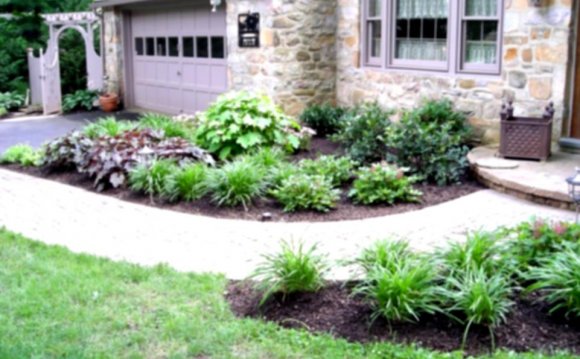
Mulch's purpose is pretty basic: It acts as a barrier, keeping sunlight and some air away from the soil surface. Sounds simple enough, but mulch's smothering effect brings with it both good news and bad. Consider these positive and negative effects of tucking in your soil beneath a blanket of mulch:
Pro: Without the summer sunrays striking it, soil stays cooler and plant roots don't stress from the heat.
Con: Slugs, earwigs, cutworms, and other eat-and-run types love cool, moist, dark places. To minimize bugs, use only a thin layer of mulch, keeping it several inches away from plant bases.
Pro: Water in the soil doesn't thaw on sunny winter days then refreeze at night. That's good news. The melting-and-freezing cycle makes water shrink and expand, possibly popping shallow-rooted plants right out of the ground - a phenomenon called heaving. Heaving spells the end for plants.
Water, Temperature and Mulch
Pro: The ground warms more slowly in the spring, so perennials aren't fooled into breaking dormancy too early. You want the ground to stay cold until it really is spring.
Con: The drawback is that perennials might bloom late or soil might not be ready for spring planting. If so, rake back mulch until the soil warms up. Or, if you don't mulch over winter, wait until plants green up before mulching.
Pro: Water evaporates more slowly from cool soil protected from the wind. If you mulch, you don't have to water as much, which saves time, money, and a precious resource.
Con: However, heavy rains can make the ground soggy and puddly for days. If beds become bogs, rake off mulch and let soil dry.
Pro: Raindrops don't hit the soil surface, so soil is less likely to wash away or splash onto plants. This keeps plants cleaner and free of some soil-dwelling diseases.
Con: Without sunlight, some seeds can't germinate, and sprouts might not have the oomph to push through the mulch. This prevents weeds, but it thwarts some good seeds, too. Mulch after seedlings are up and have some girth and vigor.
Popular Questions:
Everyone asks how much mulch to apply and when to apply it. There are no right answers. It depends on several factors, including your soil, amount of rainfall, type of mulch, and how weedy the ground is.
Here are some guidelines:
- For most mulches and soils, start with a layer 3-4 inches deep. Use newspaper as a decomposable barrier to keep weeds at bay.
- If the soil is dry, water it before applying mulch to pull weeds easier.
- Apply mulch just about anytime, remembering that if you mulch early in the spring, the ground might be slow to warm. If you mulch only in the winter to prevent heaving, wait until the ground freezes. Mulch could delay freezing of the ground, causing roots to go dormant later than normal and possibly damaging them.
Know what a weed looks like with our ID guide.
Which Mulch is Best?
Sort through the mulch options and choose the right security blanket for your flowerbeds.
Dark-color mulches will absorb and retain more heat from the sun than light-color ones. This is an advantage in cooler regions but a disadvantage in hotter climates.
Light-color mulches (particularly decorative landscaping types, such as white stones) reflect light and heat and can dangerously overheat surrounding plants.
Some mulches won't stay put. Gravel and stones creep onto lawns (and make tempting throwables for kids). Cocoa hulls blow away. Small bark chips can wash downstream in a heavy rain. In general, mulches with heavy or large pieces are more likely to stay put. Those that form a mat, such as leaves and pine needles, are usually stable, too.
Organic mulches, such as grass clippings, leaves, manure, and compost, improve the soil. Stones and plastic don't. Black plastic, unless it's porous or perforated, grows a smelly, slimy coating. It also turns brittle and breaks into little pieces that escape the garden. Cheap landscape fabric is not worth it - weeds and roots will tangle in it.
Types of Mulch
Bark
Choose from shredded, chipped, chunks, or nuggets. Usually pine, cypress, or hardwood. Attractive and long-lasting, especially the large nuggets, but might look too chunky around dainty flowers.
Cocoa Hulls
Hulls add nutrients. Fresh hulls carry chocolaty aroma. Might compact and mold.
Compost
Turn under at end of season to improve soil. Texture is too fine to suppress aggressive weeds.
Grass Clippings
Turn under at end of season. Can heat up or mold if too thick. Use 1-2 inches if fresh, 2-4 inches if dry.
Hay
Loose layer can be about 6 inches deep, will settle down. Might contain weed seed.
Landscape Fabric
Use at base of flowering shrubs. Cover with thin layer of attractive mulch. Get good-quality fabric, or weeds and roots will tangle in it. Best type is bonded, not woven.















